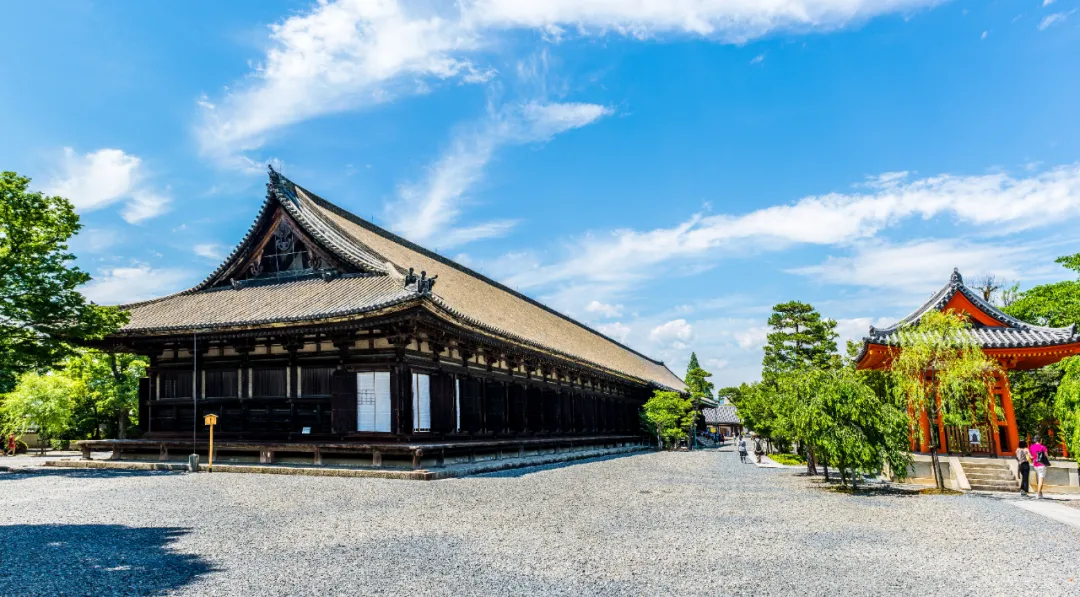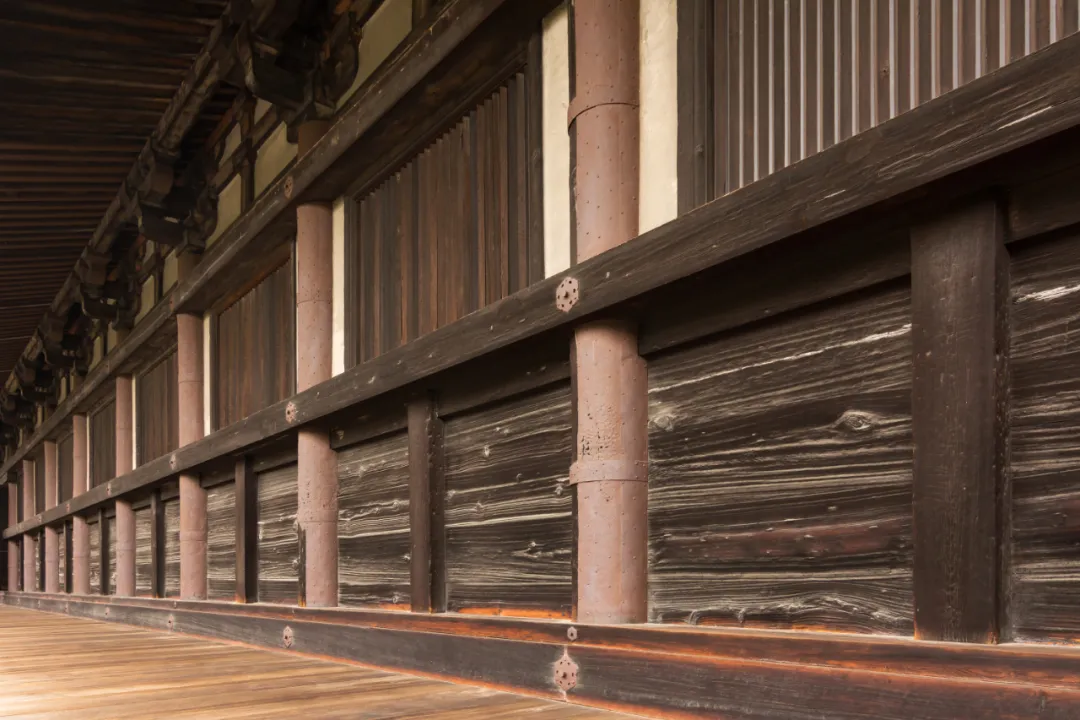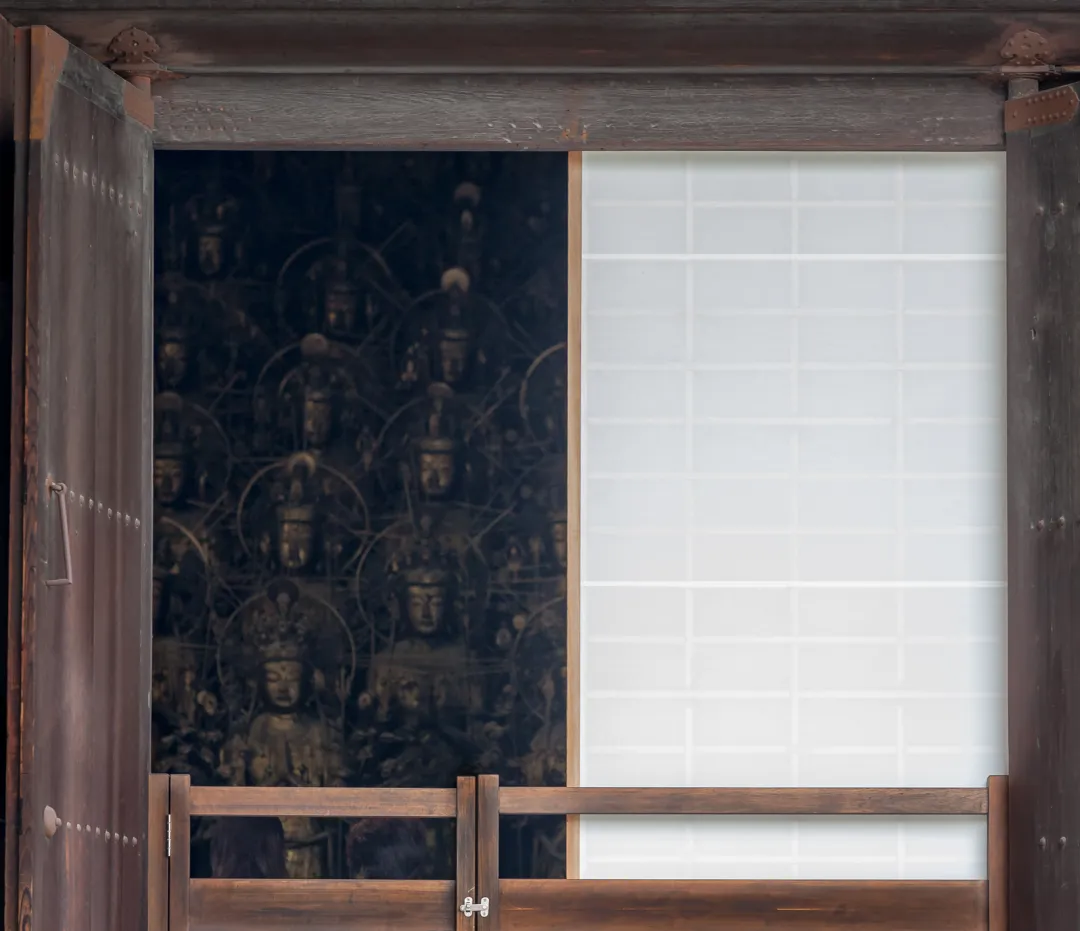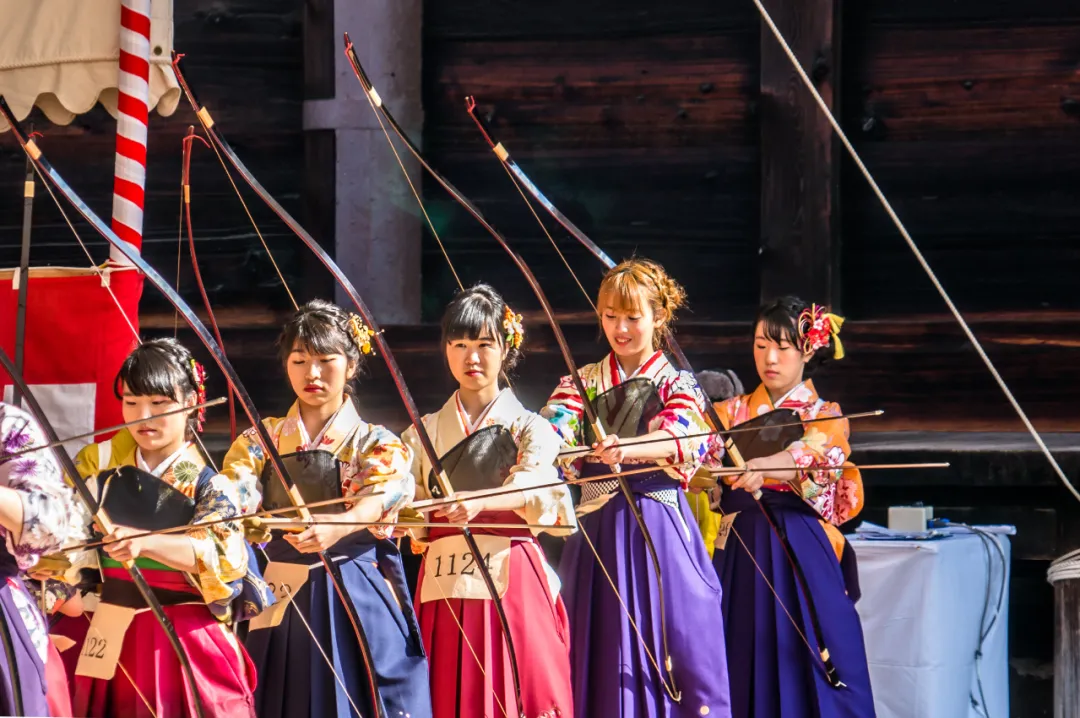

Natsume Soseki wrote in the haiku collection, "The sun is long, and the thirty-three halls are long."
As an important historical site in Kyoto, Sanjusangendo not only witnessed the historical changes from the Heian period to the Warring States period, but also has a rich cultural heritage and a sacred Buddhist atmosphere.
You can enjoy the majesty and compassion of the Thousand-Armed Kannon statue at the same time, as well as watch traditional events such as the archery tournament, the spring peach festival and the Yangzhi blessing (a Buddhist blessing ceremony) for free.
Whether you're a history buff or a culture seeker, Sanjusangendo will add a touch of history to your trip to Kyoto!

Cherry blossoms and 33 halls
Image source: https://www.shutterstock.com/zh
Natsume Soseki once wrote in his haiku collection: "日は永し三間堂長し". Translated, it means "the sun is long, and the thirty-three halls are long".
The "Sanjusangendo" in this sentence refers to the Buddhist hall located in Higashiyama District, Kyoto City. Although Natsume Soseki's haiku is short, it compares Sanjugendo to the sun, and makes people feel sacred about Sanjugendo.

The history of Sanjusangendo
Sanjusangendo has a history of more than 1,000 years and is a veritable historical site.
In 1164, the Japan military commander Taira Kiyomori at the end of the Heian period established Sanjukendo. However, the situation was not peaceful at this time, and it was not long before the 33 halls built by Taira Kiyomori were burned down.
Around 1266, by order of Emperor Saga, Sanjusangendo was rebuilt.
During the Muromachi period, the 6th shogun Ashikaga Yoshinori worked on the restoration of Sanjujukendo. Coincidentally, it is because of the Ashikaga family that there are so many ancient buildings in Kyoto today. Ashikaga Yoshimitsu, the father of Ashikaga Yoshinoshi, built Kyoto Kinkaku-ji Temple, and Ashikaga Yoshimasa, the son of Ashikaga Yoshimasa, established Ginkaku-ji Temple in Kyoto.
During the Warring States period, Toyotomi Hideyoshi stepped onto the stage of history. Under his leadership, the Great Buddha Hall in the north of the 33 halls was built. After Hideyoshi's death, the task of restoring Sanjujukendo passed to his son, Toyotomi Hideyori. After generations of protection and repair, the 33 halls have the opportunity to appear in front of the world.

The official name of the 33 halls is the main hall of Renhua Temple. As for why it is called Sansanken Hall, it is because this Buddhist hall is a wooden building with a width of 120 meters from north to south, a width of 22 meters from east to west, and a height of about 16 meters. The second reason is that in Buddhism, the change form of Guanyin Bodhisattva is 33 bodies.
A statue of the Buddha of the 33 halls
There are many national treasures preserved in the 33 halls, and they are also important cultural properties of Japan.
There are a total of 1,001 Kannon statues in the hall. The 1,000-armed Kannon statue in the main hall can be regarded as the main deity of these 1,001 Kannon statues. The thousand-armed Kannon is about 3 meters high, 7 meters including the pedestal, with 11 Kannon faces on top of the head, 40 hands on both sides of the arms, and a total of 42 hands.
The official name of the seated statue of the thousand-armed Guanyin is the Eleven-faced Thousand-Armed Thousand-Eyed Bodhisattva. At first glance, it looks majestic, but when you look closely, you have a sense of love and peace. In Buddhism, one hand of the Thousand-Armed Kannon can save 25 worlds (a Buddhist term that refers to the twenty-five worlds or twenty-five dimensions of existence), so in addition to the two hands that are combined, 40 hands can save a total of 1,000 worlds, hence the name of the Thousand-Armed Kannon.
This Thousand-armed Kannon Buddha statue was created by the famous Buddhist master Zhankei of the Kamakura period. Zhan Kei completed this Buddha statue in the last two years of his life, and it is not an exaggeration to say that this Buddha statue is the masterpiece of the life of a Buddha statue master in the late Kamakura period.
And the remaining 1,000 are the thousand-body thousand-armed Guanyin statue. On top of the 10 steps, a total of 1,000 Kannon statues stand. Each of these 1,000 Guanyin statues has a different demeanor, which seems to be the same but always makes people feel that each has its own beauty.

The thousand-body and thousand-armed Kannon statue of the 33 halls
Image source: https://www.shutterstock.com/zh
The 33 halls are not only dedicated to the statue of Guanyin, but also the "28 Divisions" of Buddhism. In Buddhism, the "Twenty-Eight Divisions" refers to the existence of Guanyin Bodhisattva who protects and assists all sentient beings. For example, the Golden Peacock King, the Great Brahma King, the Manshan Cha King, the Asura King, the Shakti King, and so on.
In addition to the "Twenty-Eight Divisions", there are also statues of the Wind God and Thunder God Buddha in the 33 halls. These two Buddha statues were created during the Kamakura period and are the oldest surviving wooden Buddha statues of the god of wind and thunder in Japan. They are located on the north and south sides of the 33 halls. The statue of the god of wind carries a windbag, while the statue of the god of thunder holds a taiko drum that can sound thunder and lightning. Whether it is the expression or the body shape, it is vividly depicted, and people can't help but stop and admire.
An annual event of Sanjusangendo
Today, Sanjusangendo, which has survived the storm but has been well cared for by the world, has become one of the must-see spots in Kyoto.
Every year, Sanjusangendo hosts three large-scale events that are very popular.
One of them is the Kyudo Tournament. During the archery tournament, young people from all over the country who have just come of age and have excellent kerndo skills come to Sanjusangendo for the annual competition. The congress is usually held in January. In the solemn and solemn atmosphere of the 33 halls, young men dressed in various gorgeous coming-of-age hakama robes raised their bows and arrows at the same time, and shot at the target with lightning speed.

Archery tournament held by Sanjujukendo
Image source: https://www.shutterstock.com/zh
The second is the Spring Peach Meeting. Echoing the name of Sanjujukendo, the Spring Peach Festival is usually held on March 3 every year, which is also the Hina Festival in Japan. At the Spring Peach Festival, the front of the statue of the Thousand-armed Kannon is placed in the form of a young figure of the Daughter's Festival. Monks perform prayer rituals to pray for the happiness and safety of the children. In addition, there will be special events such as the spring peach lottery and the spring peach gomori award.
The third is the blessing of poplar branches. As we all know, the classic image of Guanyin Bodhisattva is holding a poplar branch. The poplar branch represents purification and healing, compassion and salvation, and more importantly, blessing. Therefore, at the Yangzhi blessing event of the 33 Shrines, the monks will dip the Yangzhi in Dharma water and gently sprinkle it on the people, meaning to get rid of all diseases and live a peaceful life. The event is also usually held around January.
With its rich history, magnificent architecture, and rich cultural activities, Sanjusangendo makes it easy for every visitor to linger. If you're visiting Kyoto, don't miss out on this sacred and culturally rich place.


